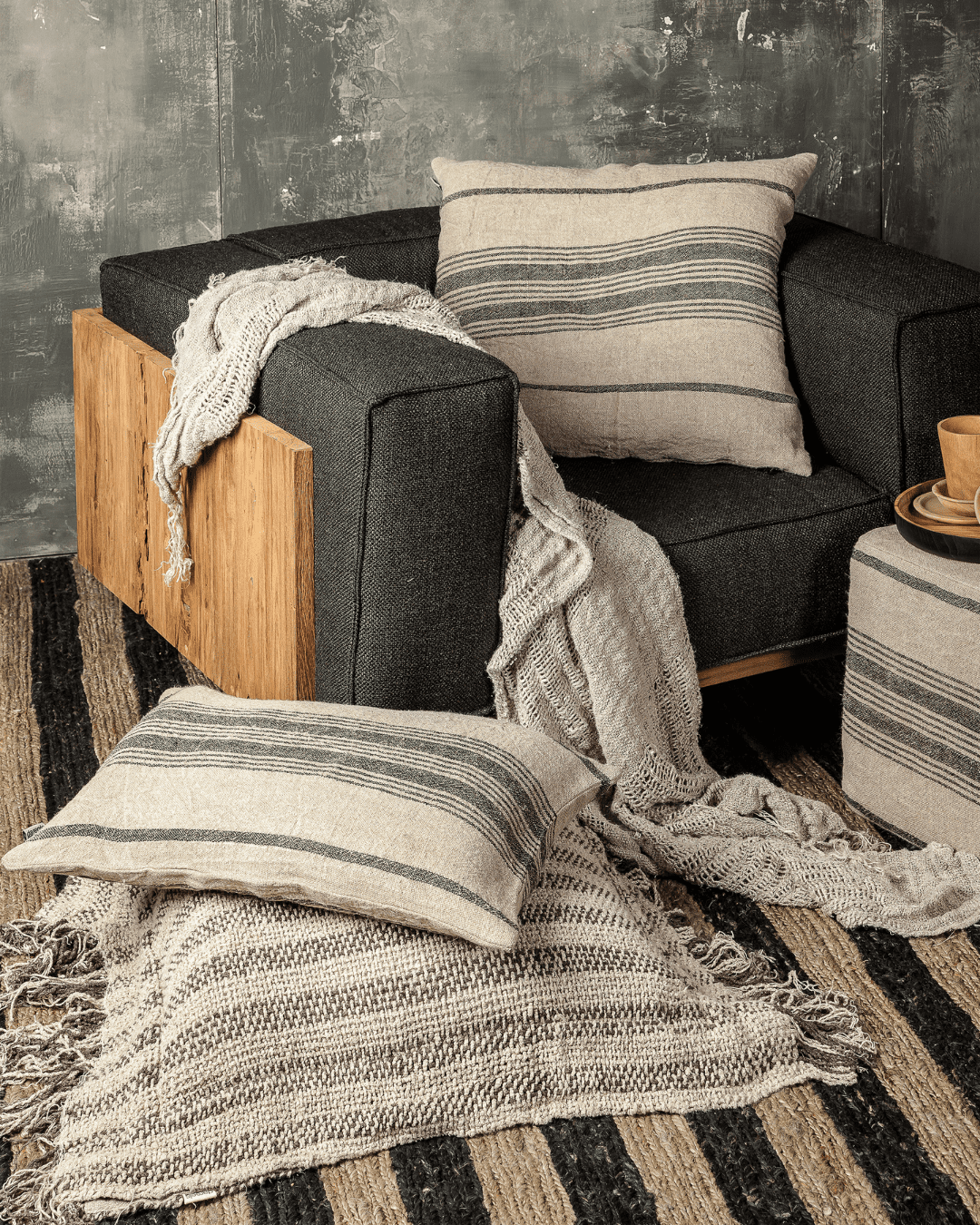SostenibilidadMaterialesTextil
Dareels y los textiles de fibra vegetal sostenible
octubre 27, 20223 Mins read


¿Qué son las fibras vegetales cuando hablamos de material textil?
los textiles de fibra vegetal son aquellos que se plantean como alternativa frente a las fibras sintéticas o de origen animal.
Este material se puede obtener de diferentes formas y partes de la planta en cuestión, ofreciendo un amplio catálogo de características y virtudes por cada variante, dispuestas a cubrir cada necesidad que se exponga.
De las semillas de la planta se extraen las fibras de algodón y el kapok, entre muchas otras; de los tallos, por otra parte, se obtienen fibras más resistentes, como el lino, el cáñamo y el yute. De las hojas vegetales se extraen la rafia y la sisal, y existen también frutos que se suman a la categoría de fibra vegetal, como es el caso del coco.
En Dareels contamos con piezas fabricadas en algodón natural lavado, como la funda nórdica BISTAR, ideal para los meses de invierno, y con una textura suave y exquisita. El algodón es una fibra que dota a los tejidos de una suavidad y ligereza características, y aunque es un material muy común en los textiles, normalmente su uso en la industria implica tratamientos químicos que desvirtúan la materia prima con el fin de agilizar la producción y abaratar costes.
Los tejidos de Dareels respetan la calidad de sus materias primas, en muchos casos incluso manteniendo su tonalidad original, o aplicando tintes naturales sin agentes químicos.
El lino resulta una fibra ligera, poco elástica y de gran textura y resistencia, por lo que es ideal para textiles de uso diario como sábanas, cojines, e incluso sofás. El contacto del lino con la piel es seguro, ya que se trata de un material hipoalergénico, que ayuda a mantener a raya las bacterias sin mayor problema que su limpieza normal de mantenimiento. Este es uno de los materiales estrella en Dareels, y para los diseñadores de interior en general, puesto que resulta muy versátil e ideal para cualquier época del año.

Ambas son fibras vegetales altamente sostenibles, y aunque no son usuales en los textiles normales, sí que son un eje de gran importancia en los productos de Dareels. Más que para componer un tejido al uso, esta fibra se mantiene en su estado natural y se trabaja mediante el trenzado, para crear superficies más maleables y resistentes, ideales para alfombras y pantallas de lámpara. Las piezas elaboradas en cáñamo y yute son trabajos únicos de artesanía, que además presentan las variaciones de sus colores naturales, respetando el ADN único de cada artículo.
El material clave de las cestas de Dareels. Ideal por su capacidad de resistencia, esta fibra, una vez trenzada (al igual que el cáñamo), consigue crear preciosas y resistentes superficies con un patrón de espiga. Un material que ofrece una gran textura y estética a cualquier rincón, en una pieza ideal para su uso a modo de cubremacetas, o como almacenamiento extra.
A parte de las numerosas cualidades que cada fibra vegetal posee por separado, suele haber ciertos factores comunes, como son una mayor resistencia general, la buena conductividad del calor, o la rápida absorción, entre otros.
Pero no todas las ventajas del uso de las fibras vegetales son físicas. Al no ser un material procedente de origen animal, resultan 100% cruelty free, y en el caso de los cultivos controlados, son también altamente sostenibles y responsables con el medioambiente.
Además de esto, también favorecen el trabajo artesanal, la industria local, y posee un fuerte componente cultural: muchas de las técnicas que se siguen empleando a día de hoy, son en realidad procesos de hace generaciones, que han llegado al presente por herencia familiar.
En Dareels se apuesta por todos los valores que esto expone, y por eso mismo, se sigue constantemente investigando nuevos materiales sostenibles que continúen apoyando al propósito de hacer el mundo cada día un poco mejor.
